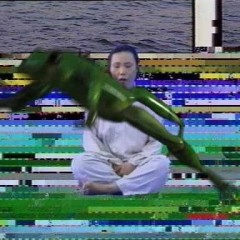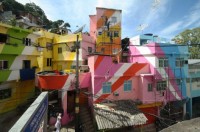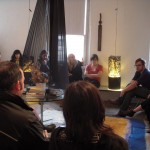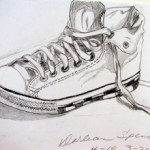Post by Ann Northrup
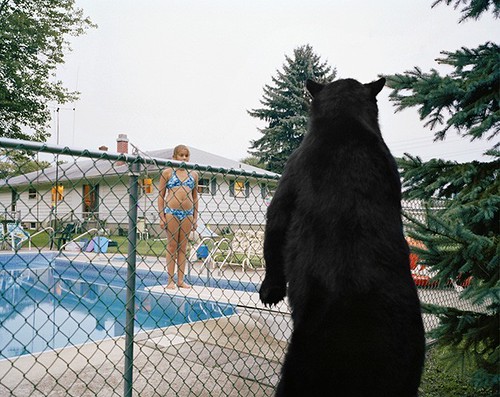
Amy Stein, from the series Domesticated.
Amy Stein gave a talk at University of Pennsylvania last Thursday, in conjunction with her show at The Print Center (1614 Latimer Street until February 14th) and the publication of her book (“Domestications” by Amy Stein published by Photolucida, Portland ORE). She laid out a clear analysis of her development as an artist and a person, showing images mostly from 2 bodies of work: “Domesticated” and “Stranded” . Some of the images are compelling in themselves, but it is she and the trajectory of her work that holds a fascination. Stein came to art after a career as editor of the blog “policy.com”, and her work has a distinct but undercover political stance (which she freely admits). She says that this artwork is especially satisfying to her because of the freedom to say one thing while simultaneously saying something else (actually, politics could have been a great realm for this also).
The lecture opened with some shocking early work in which she collaborated with taxidermists, using stuffed creatures to set up theatrical scenes about hunting. Seeing the results made her realize that her basic anti-hunting stance and the shock of the needless death of an animal previously free and wild was not enough for her. There was an issue both more topical and more universal, about the fear engendered when the wild and the domestic collide.
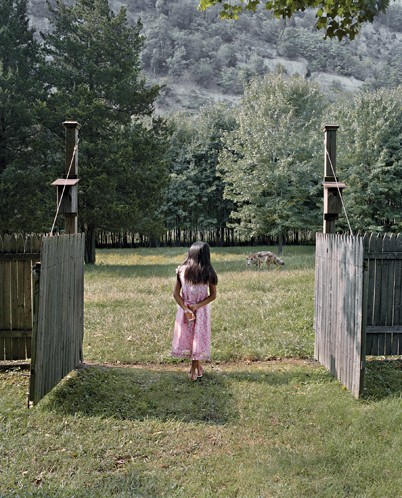
Amy Stein, from the series Domesticated.
There are lots of examples nowadays of wild animals invading space we consider our own. Ms Stein began by collecting stories from the police and from ordinary people in the small town of Matamoros PA , on the edge of a wilderness area. Wild animals come into town for high-calorie trash food, and then forget about hunting and become pests instead. The photographs in this series are of vulnerable people near their small, unassuming houses, acting out these stories for Stein, who uses wild animals that have been skinned and stuffed as props. In some cases the juxtaposition of Stein’s shocking subjects with the obvious contrivances of her compositions makes for melodrama and a high kitsch factor. For instance in one, a large and very active bear is silhouetted in front of a chain-link fence that separates him from a young girl stiffly posed on a diving board. The girl’s face is hidden, so she could be anyone. The fence protects her from the bear and detaches us from her by hiding her face. It is like a Grimm’s fairy tale, in which a child confronts violence and order wins out in the end.
Though we accept that Stein has her finger on a live pulse, so to speak, the look of the image is fake, and we understand the up-front awkwardness as a way of distancing us from any real trouble. In this ambivalent effort to manipulate emotion, they are similar to her hunting images, though the stories are more complex and subtle, and she is using photo manipulation to tell them, rather than setting them up for real.
Interestingly, the last story she told is one in which the image kind of got lost. It is about a bear who died because he got his head stuck in a plastic food jar. She couldn’t find a jar that would fit over the head of a stuffed bear, because of the rigid ears. So she put a plastic grocery bag over his head, took a picture, and left it at that. Though her visual is a failure in terms of telling the story, conveying the emotion, or making a resonant object, she still wanted to show it. The basic point seems to be political, trying to change people’s attitudes through art, more than about the art object.
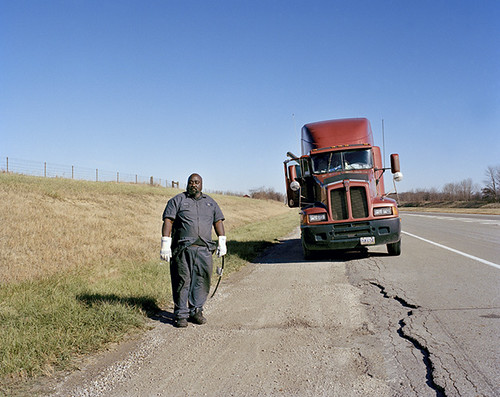
Amy Stein, from the series Stranded
The second group of photos, called “Stranded” was begun concurrently with “Domesticated”. In these Stein tries a different strategy. She obsessively drives around the country looking for stranded motorists to photograph, and inevitably ends up trying to help them. She says that people do not usually identify the photos as having overt social implications, but certainly they are present as an undercurrent. Getting stuck by the side of the road often signals a life on the edge economically and in other ways. So there is certainly a political message, but that’s not all there is. “Stranded” explores people who are actually in extremis, whose road trip has been short circuited into the twilight zone. The safe cocoon is revealed to be an illusion, and they are often angry and frightened. The first time she stopped her car and asked if she could take a picture, she herself was terrified. She describes the experience as intense, beautiful, and exhilarating, which I guess is because she is putting herself in harm’s way. Her fear reaction is part of what goes into the mix, to make these pictures both powerful and authentic.
As in her previous work, her aim is to make portraits of a state of mind, not portraits of individuals who are in distress. It is again, exploring the anxious territory between the domestic and the wild. The difference is that she has now put herself in position to take photos of something real that expresses what she wants to say, instead of contriving something in imitation of life, that inevitably looks fake. I think these pictures are more successful because they are more pared down and unified in their stance, less confusing and more beautiful.

It has been said (by Grace Paley in an essay giving advice to young writers) that if you have a subject and you don’t really understand what it’s about, that is an appropriate topic for a work of fiction. Amy Stein is exploring such topics, and the energy that brings is a great strength in her work. Her explorations have the mysterious, odd, and compelling combination of the obsessive and of expedient practicality.
–Artist Ann Northrup is painting her seventh mural for the Mural Arts Program, this one on the side of Vetri at Juniper and Spruce streets. Here’s a post on her mural at K&A.


